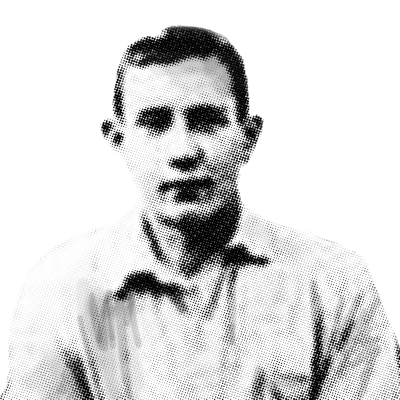Earl Pilgrim

Earl Pilgrim, one of the six original faculty members in Fairbanks, later spent decades operating the Stampede antimony mine on ground now surrounded by Denali National Park.
Pilgrim first came to Alaska as a college student in the summer of 1915 to work for the Treadwell Mines in Juneau. While studying at the University of Washington, Pilgrim invented a method of recycling silver from used film and sold the patent to the Eastman-Kodak Co. After Pilgrim graduated, his former dean recommended him to Alaska Agricultural College and School of Mines President Charles Bunnell. Pilgrim came to Fairbanks in 1922, but after a falling out with Bunnell, he left the school in 1926.
Pilgrim stayed in Alaska, though. He became fascinated with the antimony deposit on Stampede Creek just west of the then-border of Denali Park. He mined there from 1936 to 1970, serving as one of the only U.S. suppliers of the strategic mineral. Pilgrim continued to live at the mine, feeling great affection for the moose, marten and other wildlife in the area.
In 1978, Pilgrim sold the Stampede mine to a businessman, who donated it to the university for a research facility just before Congress expanded the park in 1980. Pilgrim moved back to Fairbanks in 1981.
The National Park Service accidentally destroyed the Stampede mill in 1987 when it detonated explosives found on the site. Pilgrim died four months later at the Fairbanks Pioneers Home, never knowing the fate of his mine buildings.
More online about Earl Pilgrim:
